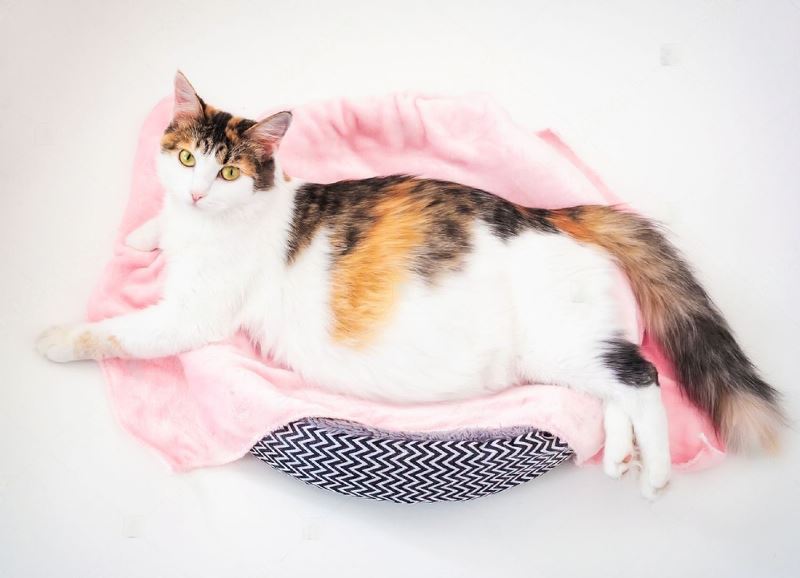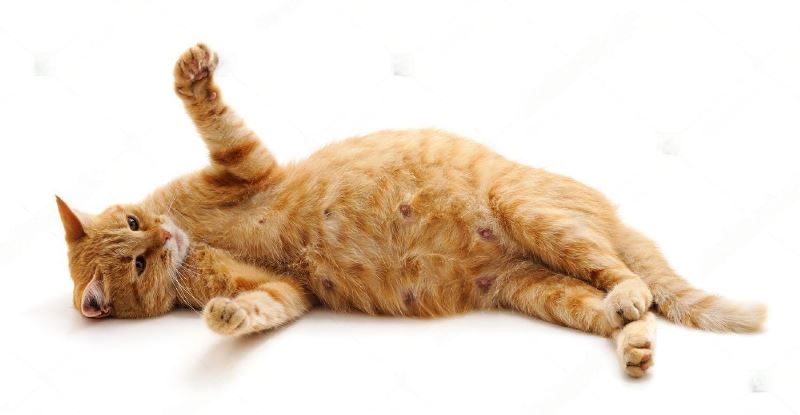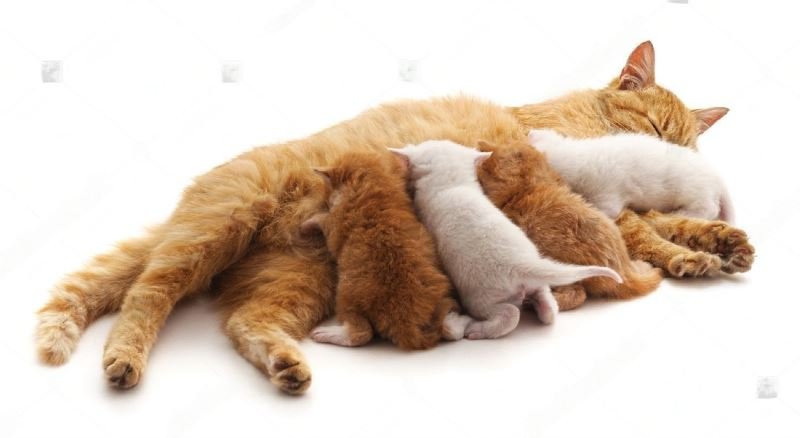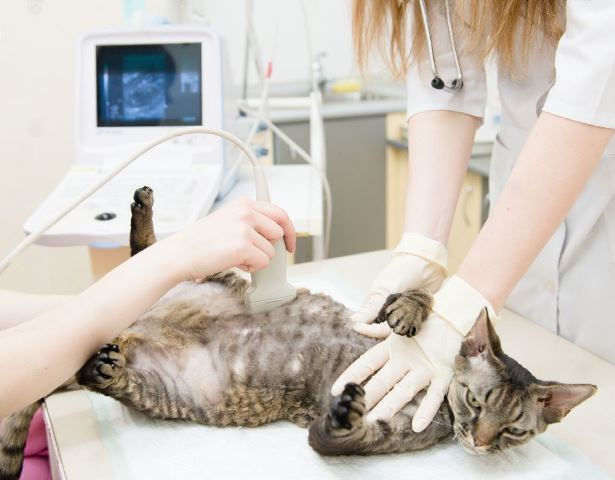How to Tell If Cat Still Has Kittens Inside | Just because your cat gave birth to a litter of kittens doesn’t mean the job is done. There’s always the possibility that one or more of the kittens were born without being pushed out. In order to ensure the health and safety of both the mother and her kittens, it’s important to know how to tell if your cat still has kittens inside.
How to Tell If Your Cat Still Has Kittens Inside
The tips below will help you determine if your cat is still nursing or caring for her kittens. If your cat has given birth but is still carrying her kittens, it’s possible to tell by the way she carries herself and the type of markings on her belly.
If you notice your cat licking or biting her belly, that’s a good sign that she is still caring for her kittens. As your cat becomes more relaxed and is no longer carrying her kittens, the fur will be less matted, her belly will look softer and the kittens may stop nursing.
If your cat has given birth to a litter of kittens and has not yet been nursing or caring for them, take her to the veterinarian as soon as possible.
It’s normal for cats to nurse their kittens after giving birth and it’s natural for them to want to care for them.

The following are how to know your cat still has kittens inside:
- She’s licking herself or her belly If your cat is still nursing, she will tend to lick her own fur or belly.
- Her fur looks matted The fur on your cat’s belly will be matting from her kittens. As the kittens grow older, their fur will be less matted and their spots may disappear.
- She has a very round belly Cats can’t hide their belly no matter how much they try. If your cat’s belly is very round, that’s a good sign that she has not given birth.
- Her behaviour has changed Your cat might start acting ” differently.” Some cats will become less playful and/or affectionate.
While it might seem like your cat’s job is done once she has given birth, there’s always the possibility that one or her kittens didn’t emerge naturally.
Read Also: 25 Symptoms of Dead Kitten Inside Cat
In these cases, there are a few things you can do to ensure the health and safety of both mother and kittens:
1. Call your veterinarian.
The sooner you can take your cat to the veterinarian, the better. It’s important to rule out complications caused by being born too early or not being able to walk or crawl because of injury.
2. Take your cat to the veterinarian.
If a cat’s condition doesn’t improve or if she has complications that need medical attention, she may need to be taken to the veterinarian immediately. You’ll have a better idea of how serious the situation is if you have a baseline of information to compare against.
3. Watch your cat carefully.
If you think your cat is having difficulty delivering the kittens, call your veterinarian. In some cases, it’s possible to assist a mother cat with her kittens. Most veterinarians will have a warm water bottle or heating pad available to help ease the kittens into the world. The kittens may also be examined under a microscope to check for abnormalities. If the first few attempts at delivery don’t go as planned, it’s okay to try again later.
4. Give your cat something to help her relax.
If possible, you can try giving your cat something that will help calm her down. Some cats will take tranquilizers or melatonin to help them rest. If you have access to prescription medication, you can also talk to your veterinarian about giving that to help with the birthing process.
5. Let your cat rest.
It’s important that your cat get enough rest and sleep to allow her body to do its job and complete the birth process. If you feel like your cat is being overly stressed, you can separate the mother and kittens for a short time to give them time to calm down. Once your cat has given birth, it’s normal for her to be tired for the next few days. She might also have some discharge from her vagina and/or an urge to use the litter box.
When Is My Cat’s Labor Over?

As stated before, it’s normal for a cat to take several days to deliver her kittens. In some cases, your cat may be done sooner than that. If your cat has been having trouble delivering the kittens for more than two days, it’s important to call your veterinarian. Some complications can happen very quickly and require immediate attention.
What To Do If Something Goes Wrong
Any birth is stressful for a mother cat, but if something goes wrong, your cat could be in danger. Your goal as a new cat parent is to keep your cat safe and healthy, so here are some tips:
- Make sure you have an updated list of your cat’s medications and their dosages. As with humans, complications can happen during pregnancy and delivery. These complications could be caused by an underlying condition or by the kittens themselves.
- If you notice any discharge from your cat’s vagina, take her to the veterinarian immediately. This is a sign that something is wrong and she may need treatment right away.
- Do not pull on your cat’s stomach. It’s normal for her to flop around when delivering the kittens, but you shouldn’t be helping by pulling on her stomach.
- Call your veterinarian immediately if your cat stops moving or starts acting abnormal. Some cats will be completely unresponsive after giving birth. Others may just appear to be sleeping. There are several reasons for this, including shock from the labor process or from the kittens themselves.
- Take a picture of your cat with her litter box to show the vet just in case you can’t make it in.
What to Do During Your Cat’s Labor

There are several things you can do to help your cat through her labor process. The most important thing is to make sure she has plenty of food and water. Even if it doesn’t seem like your cat is having any trouble, you want to make sure she’s getting enough nutrition to keep her body running. Also, try to keep her somewhere quiet where she can rest and not be disturbed. Make sure you have a litter box and litter available, too.
Things you can try:
- Offer your cat treats that she enjoys. This will make her feel more relaxed and will also help distract her from the kittens.
- Offer a drink of water. Even if your cat has been drinking plenty of water, it’s important to keep offering her fluids to stay hydrated during labor.
- Allow your cat to spend time with other cats while she’s in labor. Some cats find the presence of other cats very calming. If your cat is having trouble relaxing, having another feline around may help.
- If your cat has a favorite spot where she likes to sleep, try moving her there before she delivers her kittens.
- Try laying a blanket or towel on the floor. Your cat may find it easier to deliver her kittens on a more stable surface.
What To Do After Your Cat’s Kittens Are Born

There are several things you can do right away after your cat has given birth to her kittens. Here’s what you should know:
- Take a look at the kittens. Hold each one individually to see if they’re breathing and move them around if they’re not. If they’re all limp, don’t worry. They’re probably just very sleepy from the birth process.
- Clean up any placenta that’s left on the floor or bed. You don’t want to accidentally step on it or lick your cat and then get sick. Just scoop it up with a cloth, grab some rubbing alcohol and wipe the area clean. Make sure you wash your hands thoroughly afterward.
- Check to make sure all of the kittens are breathing. If one isn’t, check to see if you can feel a heartbeat. If you can’t feel a heartbeat, or it’s weak, then begin mouth-to-nose resuscitation. If that doesn’t work, then use a kitten rescue device and blow into the kitten’s nose until it begins breathing again.
- While you’re cleaning up the kittens, check for any open wounds. Clean them and apply some antibacterial ointment, if needed.
- Allow your cat to eat the placenta (you don’t want to feed her something that is supposed to pass through her system right after giving birth).
- Provide a warm place for your cat and her kittens to rest until they’re able to leave the nest.
- Depending on the size of the litter box, you may want to clean it out now so your cat can go back to using it as soon as possible.
How to Tell If Your Cat Is in Pain During Labor

You can help ease your cat’s labor by providing her with the things she needs to have a comfortable time of it. Here are some signs that your cat is in pain during labor:
- Your cat will begin to pace or rest more than usual.
- She may stop eating or drink less.
- Her eyes will look dull and slightly bloodshot.
- She may seek out a quiet place to hide.
- She may go into a state of shock (possibly standing still, not moving at all).
- She may urinate or defecate more often.
How Can You Help The Mother Cat To Deliver Her Stuck Kitten?
If your cat has given birth to a stillborn kitten or if she’s having trouble delivering her kittens, it’s very important that you do not force her to give birth. That can cause harm to the kittens and to your cat. If your cat is in labor and her body is blocking the passage of the kitten, here are some steps you can take to help her deliver the kitten:
- Have someone gently place their hands on the mother cat’s abdomen.
- Gently thrust the kitten back into the birth canal by performing abdominal pressure on the mother cat.
- Perform this technique 3-5 times a day until the kitten is delivered.
- Once the kitten is delivered, support it by removing it from the mother cat’s abdomen and place it in a warm, quiet location where it can be cared for.
- If possible, have someone contact the local animal shelter and arrange to take the kitten there to ensure its well-being.
- If you are unable to remove the kitten from the mother cat’s body, wait at least one hour before trying again.
- Call your veterinarian if the kitten does not pass within 24 hours.
How To Prepare Yourself For Your Cat’s Delivery
Having a litter box and scoop on hand is the best way to be ready for your cat’s arrival. Here are some more things you can do to be ready:
- Make sure you have a large, open space in which to deliver the kittens.
- Have several towels on hand so that the mother cat has somewhere to rest when she’s done birthing her kittens.
- Have a clean towel or blanket to place over the mother cat so that she doesn’t have to birth her kittens inside of a dirty environment.
- Have a large bag in which to place the kittens immediately after they’re born.
- Have a small bowl of warm water and a washcloth ready to clean the mother cat and her kittens with.
- Have a towel or two on hand to dry the mother cat and her kittens after they’ve been cleaned.
How To Take Care Of Your New Kitten
To take good care of your new kitten(s), here are some things you should know:
- Make sure the kitten has been wormed, vaccinated, and spayed or neutered.
- Watch for signs of illness in the mother cat.
- Visit your veterinarian regularly to ensure that the kittens are healthy.
- Provide plenty of nutritious food to help the mother cat give birth to healthy kittens.
- Be patient! Kittens need time to adjust to their new home and learn how to be cats.
- Play with your kitten(s) often and teach them what it means to be a well-mannered cat.
Conclusion: How to Tell If Cat Still Has Kittens Inside
Congratulations on adding a new member to your family! I hope this information has been helpful and that you have a wonderful time caring for your new kittens. Please feel free to contact me if you have any additional questions or concerns.
Embrace Your Inner “Cat Person,” And Share Some Fun Facts About Cats!
Cats are not only great companions, but they are excellent animal companions with unique and fascinating personalities. Learn more about your favorite feline friends.
Further Reading:
Rottweiler: Every Information You Need to Know About This Dog
Rhodesian Ridgeback: The Lion Fighter
1000 Interesting Dog Names and their Meaning
Cane Corso: Every Information About This Breed
Golden Retriever: Everything You Need To Know About This Breed
Can Dogs Eat Bread? Read This Before Feeding It To Them
Can Dog Eat Pineapple? Pineapple, the Fruit vs Pineapple, the Treat
Can Dog Have Beef Jerky? The Truth About This Healthy Snack
Can Dog Have Broccoli? – Everything You Need to Know
Can Dogs Eat Eggplant? The Truth, Explained
Can Dog Eat Eggs – Everything You Need to Know About Eggs and Your Dog
How Long Can a Dog Go Without Food
Can Dogs Eat Pork – 10 Things You Should Know